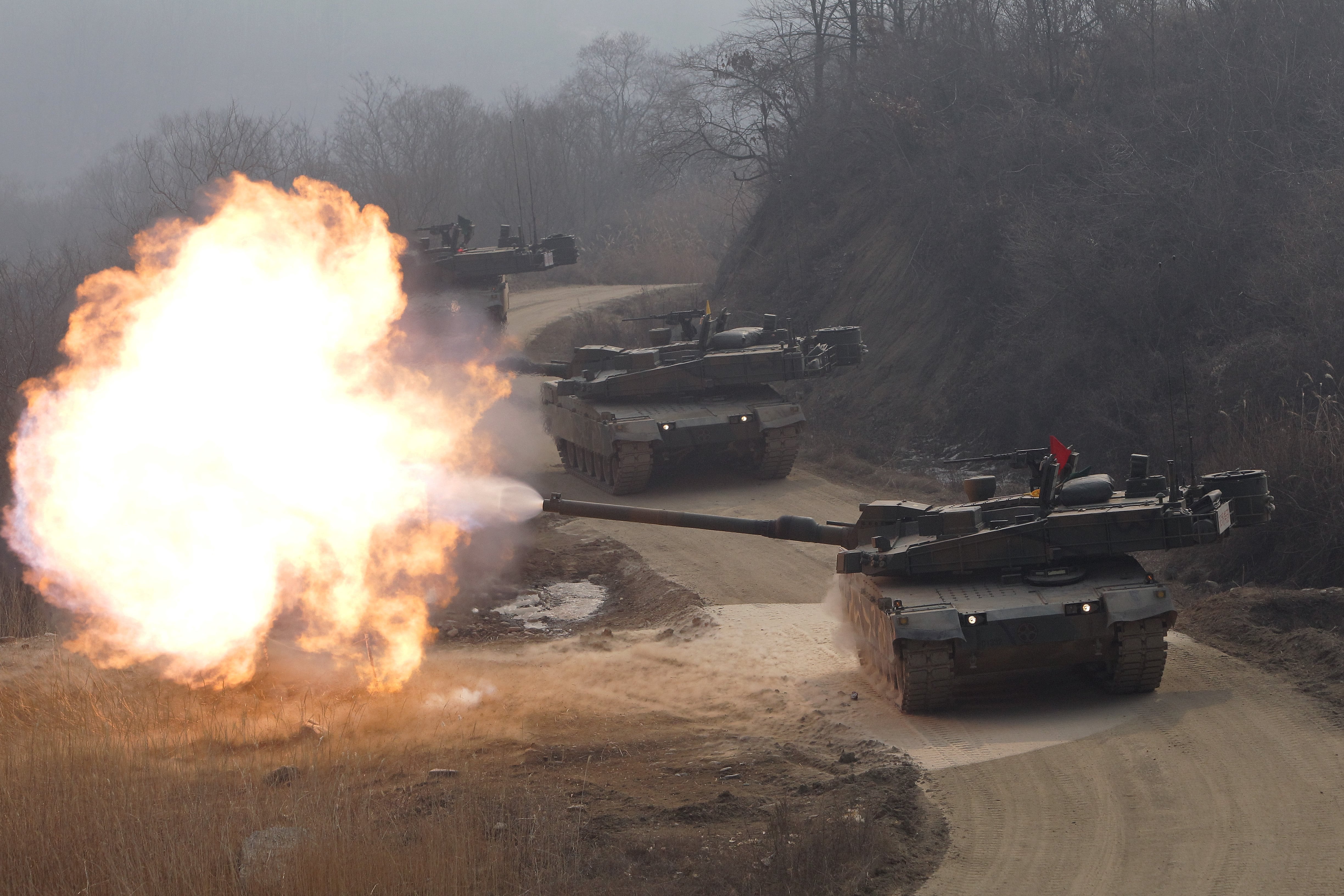SEOUL and LONDON — Hanwha Defense is teaming up with U.K. suppliers to compete for the Mobile Fires Platform program, a British effort to acquire new self-propelled howitzers to replace the AS90, the South Korean company announced Wednesday.
“Hanwha Defense has begun formal discussions with UK partners to arrange for a ‘Made in the UK’ variant of its K9 Self-Propelled Howitzer,” the company said in a news release. “The K9 is operationally proven and will be put forward by Hanwha Defense for the UK’s Mobile Fires Platform programme to equip the British Army with a world-leading artillery capability.”
Hanwha Defense plans to offer the newest variant of the K9 self-propelled howitzer fitted with a fully automated ammunition loading system, a key requirement for the MFP program.
The MFP program seeks to acquire 116 self-propelled howitzers. A request for proposals is scheduled to be issued in 2022, and Britain plans to award a final contract in 2025.
The South Korean sales effort in the U.K. comes as the two nations draw closer on weapons cooperation. The British Royal Navy’s aircraft carrier Queen Elizabeth is scheduled to visit South Korea as part of its deployment to the Indo-Pacific region later this year. The new carrier is scheduled to host a high-level meeting of officials, industry leaders and military chiefs‚ known as the Pacific Future Forum, when the warship visits South Korea in late August.
The two sides have also done business together before, most notably when South Korea built four large oilers for the Royal Fleet Auxiliary, the logistics arm of the Navy.
But the K9 is one of several contenders to replace the British Army’s aging AS90 howitzer, which has been around for about 30 years. Rheinmetall, with a howitzer variant of the eight-wheel drive Boxer armored personnel carrier, and BAE Systems, with the Archer truck-mounted system, are among the companies that have expressed interest in meeting the requirement for a wheeled or tracked weapon.
Some have considered an updated version of the AS90, but that appears to be an unpopular option.
RELATED

Britain announced as part of its recently published integrated defense and security review that the government is setting aside £800 million (U.S. $1 billion) to rebuild its artillery capability, which has fallen behind the fire power of rival nations like Russia.
However, with the program expected to run until the end of the decade, its been the target of those seeking quicker acquisition.
Parliamentary Defence Committee Chair Tobias Ellwood recently wrote to the Defence Ministry voicing concern about the “apparent lack of urgency in closing the current capability gap.”
What is Hanwha offering?
“The proposed UK (K9) version will be fitted with advanced technologies, such as an unmanned turret, mine protection kits and composite rubber tracks,” the South Korean land systems manufacturer said. “Furthermore, an automated resupply capability will be introduced using Hanwha’s robotic K10 ammunition resupply vehicle.”
Tests and evaluations for the upgraded version, dubbed K9A2, are in full swing, with the aim of increasing the artillery’s key capabilities, such as the maximum rate of fire and automatic ammunition loading functions, according to the release.
“The U.K. is the first international market to which the newest K9A2 is being offered,” Jeff Sung, a spokesman for Hanwha Defense, told Defense News. “If successful, the U.K. industry would have more opportunities to be involved in the K9 upgrade programs in other countries.”
Talks are already underway with U.K. industry partners, including Lockheed Martin UK, Pearson Engineering and Horstman, the spokesman said, adding that Canada’s Soucy Defense, which manufactures composite rubber track systems, is one of the global suppliers involved in Hanwha’s MFP campaign.
Securing a place on Hanwha’s lineup would be a key target for Lockheed Martin UK as it looks to recover from the recent loss of the Warrior infantry fighting vehicle update program. The British Army canceled a deal with the company as part of its integrated defense and security review released in March, leading tot he loss of 158 jobs at its turret design and manufacture center of excellence in Ampthill, southern England.
Hanwha underscored its effort to boost the U.K. defense industry, pledging the maximum value of the British Army’s K9s will be made in the U.K. and promising to transfer related technology and know-how to U.K. partners. The company also said it will introduce specialist training and new skills for the long-term development, manufacture, maintenance and support of the British Army’s K9 howitzer, should it hire the firm.
The 155mm/52-caliber K9 Thunder was built by the Agency for Defense Development and Hanwha Defense in 1998. About 2,400 units of the K9 and K10 family vehicles are in service globally. The K9 platform and its core technology have been exported to several countries including Turkey, Poland, India, Finland, Norway and Estonia. Australia also selected the K9 in September 2020 as the preferred solution for its Land 8116 Phase 1 program to locally produce 30 AS9 self-propelled howitzers along with 15 AS10 armored ammunition resupply vehicles, with a final contract set for early 2022.
Designed to provide effective and deep fire support across theaters, the K9 is capable of firing three rounds in under 15 seconds in a burst, or six to eight rounds per minute during sustained firing. Equipped with an unmanned automated turret, the K9A2 will be capable of firing nine to 10 rounds per minute.
Brian Kim was a South Korea correspondent for Defense News.
Andrew Chuter is the United Kingdom correspondent for Defense News.








